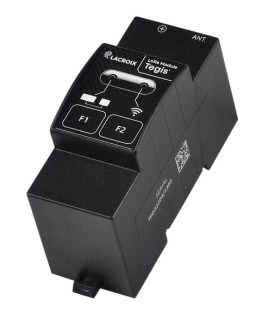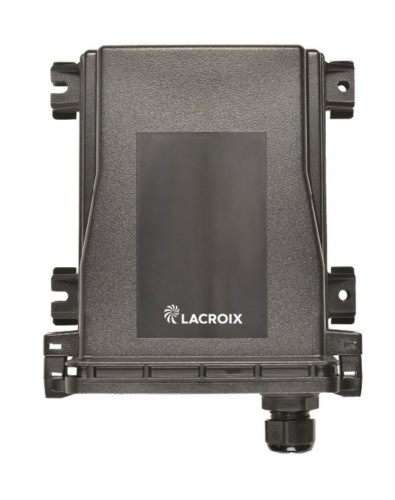Based on a modular & scalable design, our cabinet-mounted extension module enable our Tegis control units and associated lighting points to communicate with each other, enabling finer-grained management of our public lighting systems.
Our gateways enable communication between our management controllers and our web platform when only light points management is required.

Radio frequency technology with the RF extension module
The RF extension module is equipped with a communication system that operates on radio frequencies adapted to offer extended coverage and high reliability in the management of light points. It can be used to control, monitor and report consumption data from light points. It acts as an intermediary between the Tegis contral unit located in the cabinet and the radio controllers used to manage the light points (Zhaga or pole-mounted).
Very small in size, this module is 36,5mm width and is easily installed on a DIN rail in the public lighting cabinet, in conjunction with our Tegis control units.

Powerline technology with PLC module
PLC (Power Line Communication) technology in street lighting is a communication solution that enables data to be transmitted over existing power lines, using electrical current to carry information between different pieces of equipment.
The PLC extension module can be used to control, monitor and report consumption data of lighting points. It acts as an intermediary between our Tegis control unit in the cabinet and the PLC controllers used to manage the light points (TNX24 located at the foot of the lighting poles).
This technology offers significant advantages:
- Use of existing infrastructure
- Reliable & robust communication
- Data security
- Bidirectional data transmission
Small in size, 71 mm width , it is easily installed on a DIN rail in the street lighting cabinet, in conjunction with our central management units.es, il s’installe facilement sur un rail DIN de l’armoire d’éclairage public en association avec nos unités centrales de gestion.

The communication gateway: APS
The gateway is an interconnection point between the local mesh network and GSM networks for exchanging data and instructions, between the web platforms and communicating nodes, enabling remote management, control and monitoring of street lighting installations.
The APS (“Access Point System”, also known as “Gateway”) connects the SLC Zhaga and NEMA nodes to the Internet and to our Tegis Web platform.
Its role is to transmit data from the various light points. This data can include information on energy consumption, luminaire’s status, faults, dimming levels, etc.
Depending on the version, the APS communicates via GSM (4G) or Ethernet to transmit and receive information from our Tegis Web platform. In the field, it uses a meshed RF communication network (2.4 GHz), based on Wirepas technology to connect our entire ecosystem.

